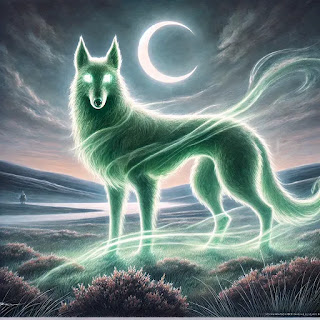There’s something timeless about mythical creatures. They’ve prowled the edges of our imagination for centuries, slipping between fact and fiction, haunting our dreams and shaping our fears. From dragons guarding hoards of gold to selkies shedding their skins, these beings hold the power to reveal not only the mysteries of the world but also the secrets we keep within ourselves.
But mythical creatures aren’t confined to ancient legends. They thrive in the stories we tell today, reimagined and redefined to reflect modern fears, hopes, and desires. This week, I’ve been exploring the ways these creatures continue to evolve in my own writing—and why they remain so vital to our storytelling.
The Creatures That Haunt Us
Every culture has its monsters, its guardians, its in-betweens. They’re not just relics of old beliefs—they’re mirrors of who we are. Take the banshee, for example: a harbinger of death, yes, but also a reflection of grief’s raw, keening wail. Or the phoenix, a creature that burns itself to ashes only to rise again—a metaphor for resilience, transformation, and the cyclical nature of life.
When I write about these beings, I’m not just borrowing from folklore. I’m asking questions:
- What do these creatures represent today?
- How do they challenge or comfort us?
- What truths do they force us to confront?
Breathing New Life Into Old Legends
One of my current projects centers on a creature rarely explored in modern tales: the Cù Sìth, a spectral hound from Scottish mythology. Known for its emerald-green fur and eerie howl, the Cù Sìth is said to foretell death. But what if there’s more to its story? What if it’s not just a harbinger, but a guide—one that walks the line between this world and the next, helping souls find their way?
This reimagining gives the creature agency, depth, and a purpose that goes beyond its traditional role. It’s not about rewriting the myth; it’s about uncovering the layers beneath it.
Why Mythical Creatures Endure
Mythical creatures endure because they adapt. They shape-shift to fit our fears, our dreams, and our changing world. A dragon in a medieval legend might represent greed, but a dragon in a modern story could symbolize environmental destruction or the power of the natural world. The context changes, but the core remains.
When I write about these beings, I want them to feel alive—not as relics of a forgotten past, but as forces that still walk among us. After all, who’s to say they’ve ever left?
What Creatures Speak to You?
Do you have a favorite mythical creature? One that fascinates you, terrifies you, or feels like it belongs in your own story? Share your thoughts in the comments. I’d love to know which beings haunt your imagination.
Because at the end of the day, mythical creatures aren’t just stories—they’re bridges to the unknown, reminders of our humanity, and proof that the line between reality and magic is thinner than we think.





,%20and%20a%20mischievou.webp)
No comments:
Post a Comment